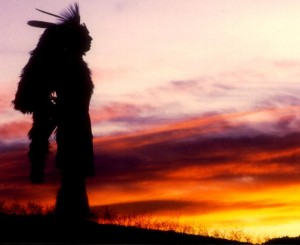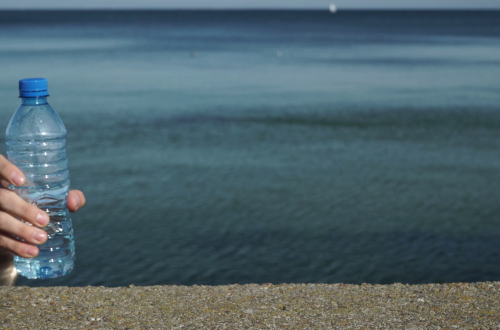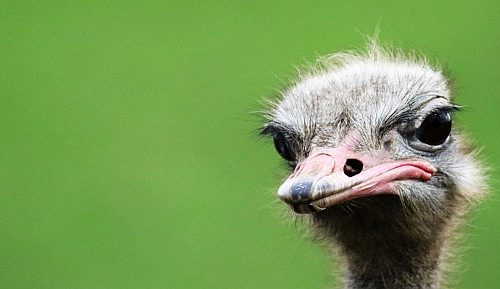Native American Studies – Reflections

Creative and Inspirational People
Ringggg, ding, ding, ding goes the bell. Sixth hour - last class, and I'm fortunate enough to be able to join the Native American Studies group for a day. This group is made up of mostly Native American high school students, a few white students, and one hispanic student.
We all head down to the computer lab where the librarian graciously welcomes the class in. Their first quest is to write one paragraph about a series they had just previewed, entitled Into The West. The series portrays tales from the American West in the 19th century, told from the perspective of two families, one of white settlers and one of Native Americans. A movie depicting the plight of the Lakota people.
When you ask, be prepared for an answer
I approached the group with a short question pertaining to the movie. "If you could ask one question after watching this movie what would it be?" One young women responded by stating "How do you read white people?"
Others in the group were shocked that she would boldly state that to me - but I thought it was appropriate. She and I have an open understanding.
I asked, she responded
We talked about the challenges of a number of different cultures and how the traditions of each of these cultures have suffered through the ages.
I then had the group write a brief paragraph expressing how the movie made them feel. I wanted them to explain in their own words 1) the best parts of the movie, 2)the worst part of the movie, 3) and what they learned by watching the movie.
A Students View Point - Loss of Buffalo
- The worst part for many was watching as the children were being forced to go to the white man's school. Losing Identity, Integrity, Spirit and Pride. They were proud people, not deserving of the pain and suffering that was afflicted upon them.
- The best part was when it was over. Student's were saddened by the loss of many things, including the Buffalo which the white man slaughtered. Grieving for a generation of elders who fought to hold onto the traditions - traditions they practice today. Conviction on a personal level. A renewed spirit to find their own destinies.
- The Most Interesting was learning about the traditions. Wanting to know more, to learn, to absorb, and to make proud those who came before them and those who still walk the earth. A real thirst to learn about who they are as people.
Culture and Traditions
At what age group in our American culture do you see the most activity and enthusiasm for cultural studies? When I asked the students this, I found that they were way ahead of me.
Navajo Class
One of the young ladies spoke of the clubs at the elementary level, but noted that the real learning comes in junior high (middle school) during Navajo Class. In Navajo class the studies are more personal, and much detail is added. The club structure allows the students to participate in events that are related to their culture, by building upon the foundations of their beliefs. They embrace the cultural learning experience - this happens in middle school.
Native American Studies
Native American studies at the high school level is more about all of the cultures combined. Thus you see a more diverse group of students who have a yearning to learn the historical knowledge and gain their own perspective from the historical study.
Student Writings
Raising a generation of young people that will lead our society and pass down the cultural heritage of their forefathers is important. When asked to collaborate on what part of their culture and traditions they most appreciated, all were in agreement that family was of the first importance. The following information was provided by the Native American Studies students.
Language
One student noted that when she was little, her mother would speak Navajo to her and her siblings. While she cannot speak the language fluently, she understands the meaning of the words when she hears them speak. Yet, not as much as she would like to understand. There is a Navajo Language & Cultural Perpetuation Project that has gain momentum to try to preserve this language of the people.
Dini Bizaad - Navajo Language & Culture A project to create comprehensive and accessible language learning materials for the web and mobile devices by collecting the spoken word of Navajo elders

Churches
The Native American Church leadership as told to me by one young women consists of:
- The Road man
- The Cedar man
- The Drummer
- The Fire Chief
The leaders of the church perform the sacred ceremonies. Ceremonies that last for days. It is an honor to learn the songs of the Native Americans. Students want to learn peyote music in church, as well as drumming. Some songs take a very long time to learn, but they are very important.
 One student spoke about how her father learned drumming as child. She expressed with great pride by stating ,"it is beautiful to hear my parents singing together. My father taught my mother the songs. I love to hear them sing together".
One student spoke about how her father learned drumming as child. She expressed with great pride by stating ,"it is beautiful to hear my parents singing together. My father taught my mother the songs. I love to hear them sing together".
Pottery
Another student spoke openly about his adventures with his family who lived a long distance away. Family, grandparents, are very important. Being able to travel and visit his family is important. Help his grandfather with making traditional pottery; not just making the pottery, but also going on trips to sell them with him. It's an art that is passed down from one generation to another.
Loss of Buffalo & the Anger
One young student was angry, and I allowed her to write out her anger over what she had experience after watching the movie. The love of the land and nature are embedded into the caretakers of tomorrow. The very fabric of their existence is interwoven into the earth. The Native Americans don't just learn the lessons of the past, they learn the stories - they enact the stories into their daily lives. They continue with the ceremonies and traditions that others would seek to steal from them even today. "The stories about the Loss of Buffalo are important. The stories need to be told from one generation to the next".
I believe she will tell those stories!
Totem Poles
The art of building animal totems is a laborious one, yet rich in symbolic cultural and traditions. Animal Totems. Discover facts and information about the culture of Native American Indians and the meanings of the Animal Totems used by different tribes
Teaching for the Future While Holding onto Tradition
How we teach our children about other cultures is important. The younger we teach them, the more influence we have with molding and shaping responsible relationships.
As I sit with my 6 year old granddaughter watching the movie Into The West, she hasn't said a word. Already I can see she is a history buff. She requests to view more of the series. She is excited to see history unfold before her. Once in a while she will look at me in amazement, or place a hand over her mouth during a scene that elicits emotion. We stop the movie, we chat, we move on, we learn, we grow.
There is a wealth of information that may be of interest for those who want to learn more about the Native Americans. One study on the Navajo Code Talkers gives a fascinating look at probably the most famous use of the Navajo language outside of the Navajo Nation was during World War II. 420 young Navajo men were recruited and became Marines codetalkers during the war in the Pacific. Their story is just one of many wonderful stories of Native American people.
Enjoy!
You May Also Like

Emotional and financial health. Letting go of stress.
April 24, 2023
Change how you think – and you will change your life
November 28, 2022